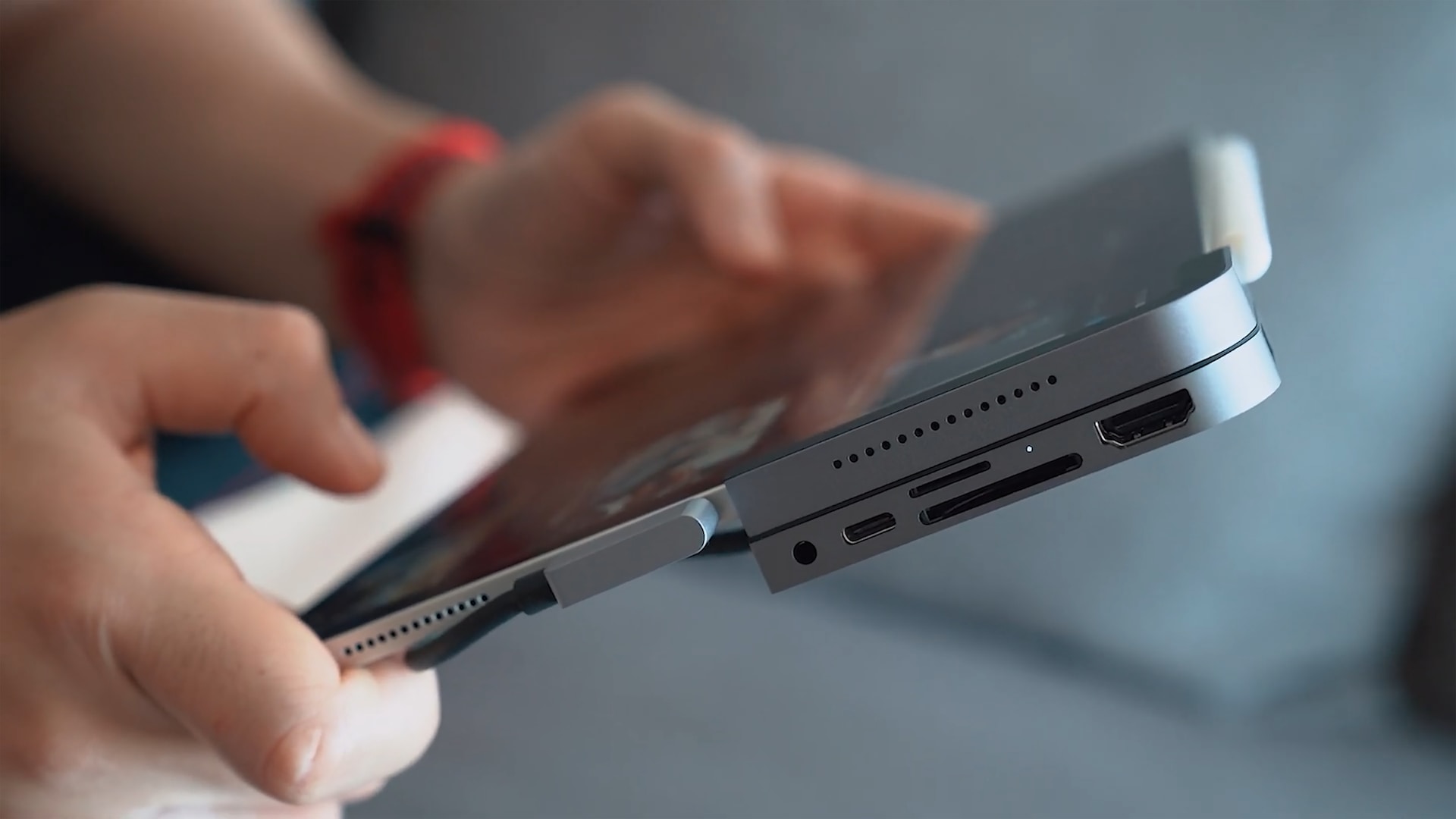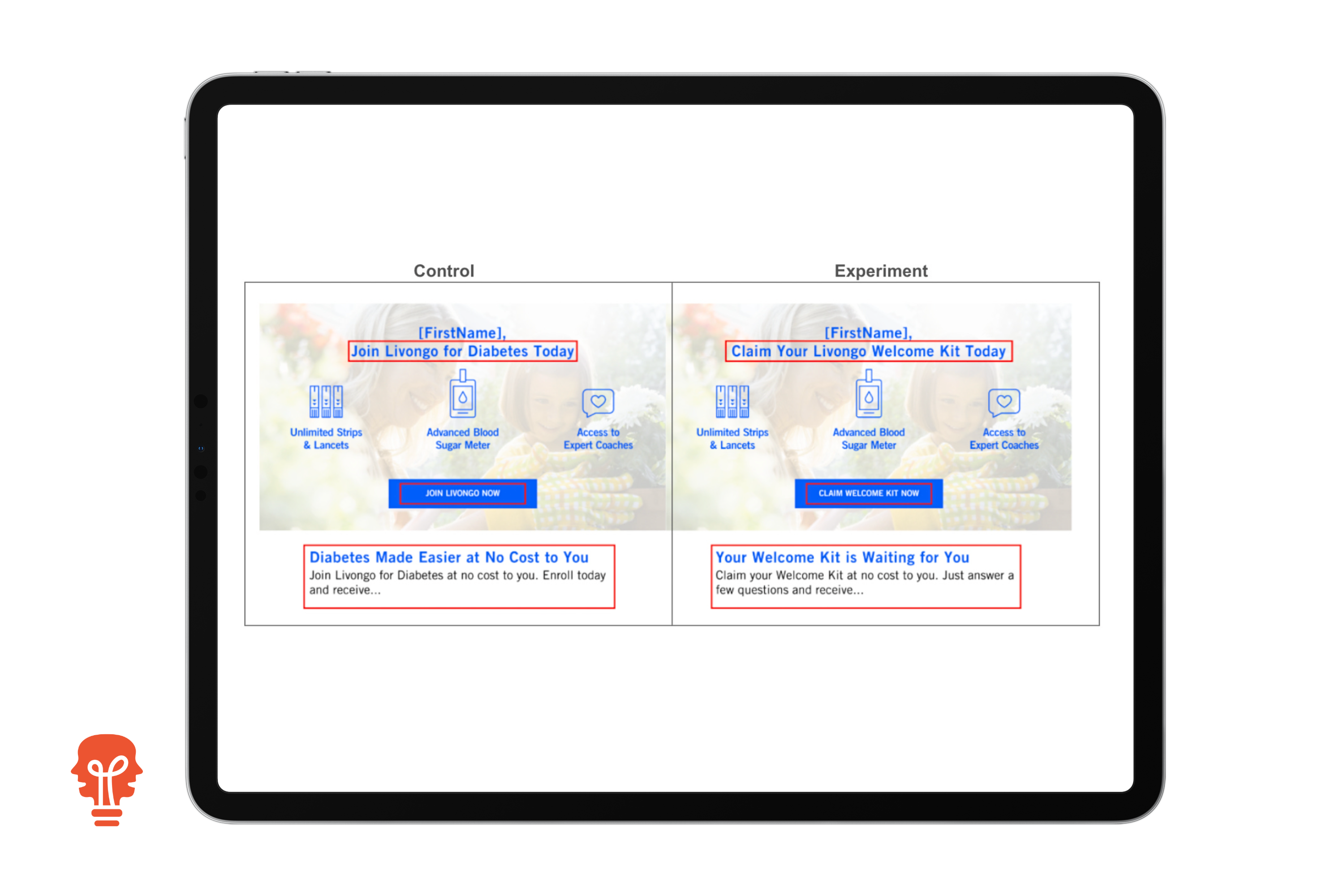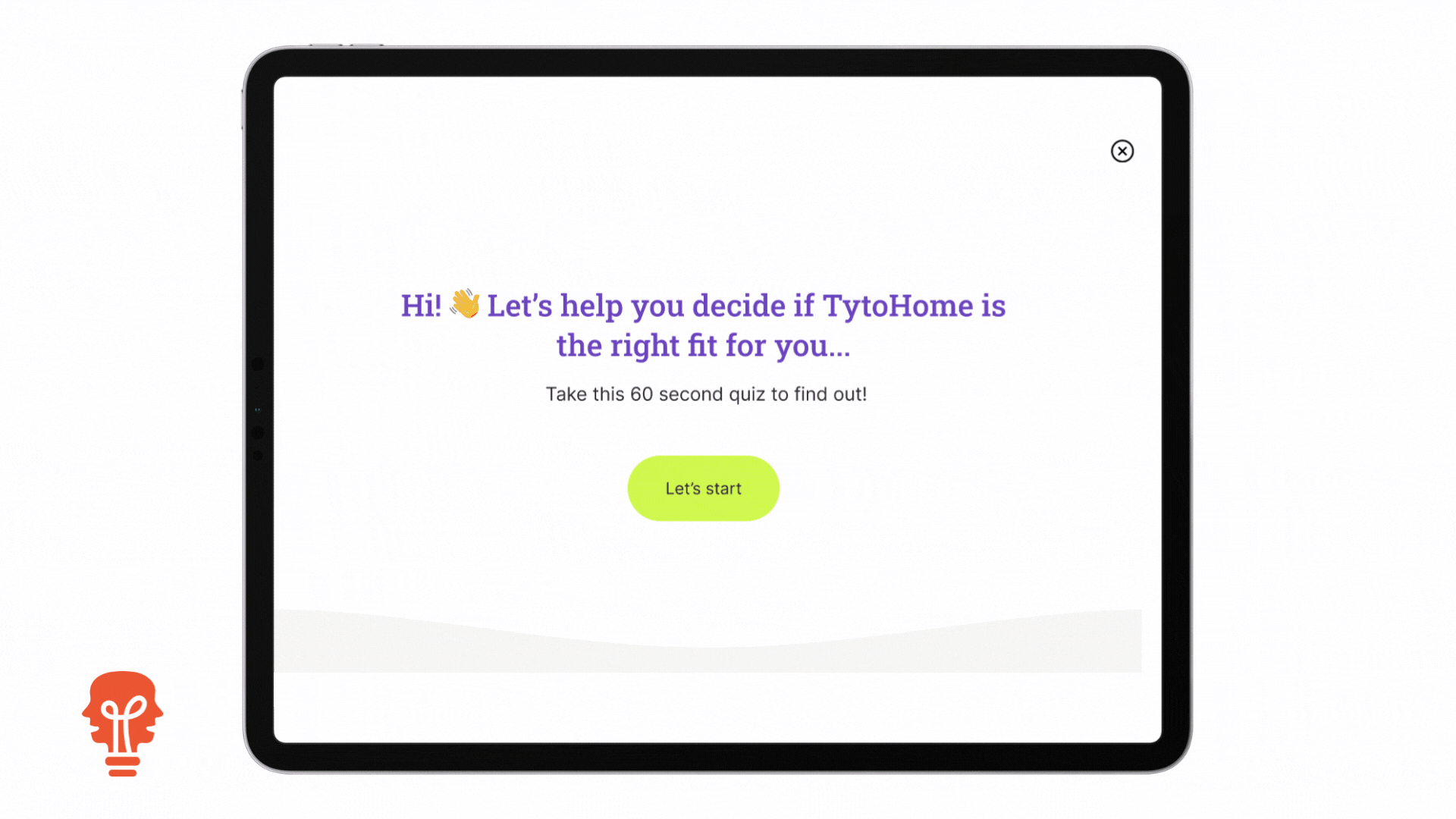So you’re a health plan or health tech that takes on patients. The only problem is you can’t seem to get in touch with them. When you send a letter, they don’t respond. When you call, they don’t pick up. They may download your digital health product, but they don’t use it.
Sound familiar? While today some may call this getting ‘ghosted,’ there’s more to it than that.
It could be a lot of things: information aversion (we don’t like to hear bad news), ambiguity aversion (we don’t like uncertainty), or maybe just status quo and friction (we usually choose the easy button).
Whatever the reason, why bother creating a great digital health product if you can’t get anyone to use it?
For context: our team is a bunch of behavioral scientists. We study human behavior—why people do what they do. We’ve done experiments with top Silicon Valley companies to drive engagement. And we’ve worked with dozens of healthtech companies and other top players.
But now for the first time, we’re itemizing the findings into actionable takeaways around driving top of funnel wins within healthcare, based on our dataset of insights. Here are 6 proven strategies from behavioral science for getting healthcare patients to engage with your product.
1) Tell People What You’re Going to Tell Them, Before You Tell Them: Attention Bias
This is a bit like how we deal with preschoolers. You wouldn’t tell a toddler you need to leave the park right now, would you? Instead, you’d say, ‘Hey in 10 minutes, we need to leave the park.’ Then, in 2 minutes, you’d tell them, ‘We need to go.’
Giving people a heads-up about something makes them better prepared to deal with it.
And, it turns out, this isn’t a new idea. The seminal study here was done in 1999, back when phone books existed. 2,000 people got a phone call asking them to complete a health survey. Only half were sent a letter in the mail beforehand telling them to expect a call.
The response rate of those who received the letter was 76%. For those who didn’t? Just 60%. Wow.
(By the way, a 60% baseline telephone response rate is bonkers! Those were the days.)
Today, letters are too slow, and the delay between a letter and a phone call is just too much. But SMS? That can work. A 2016 study took 9,000 people, sent them an SMS before they called, and saw similar results. Sending an SMS prior to calling helped improve participation in population-based surveys, increasing response and cooperation rates by 60% and 79%, respectively.
Our world is noisy. People are busy. If you want them to pay attention, you have to work for it. And an SMS is a simple way to do that. Just tell people what you’re going to do, then do it. No secret sauce. Here’s the SMS that the Australian Research Council sent:
You have been chosen to participate in an important Australian Research Council survey. An interviewer will ring on 9999 9999. RSCHD 1800999999. Thank you.
The Behavioral Science Takeaway
Humans have a limited capacity for attention. We can think of attention as a spotlight. Just as a spotlight illuminates a particular area while leaving others in darkness, our attention focuses on certain stimuli while ignoring others. This selective attention allows us to process relevant information without becoming overwhelmed by every sensory input.
2) Make People Feel Like They Already Own Your Digital Health Product: The Endowment Effect
Our team partnered with Livongo, a diabetes management company, to help them rethink their onboarding strategy. After conducting the behavioral diagnosis and assessing the psychologies at play, they made one simple change that drove a 120% increase in registration. What was it? Switching email phrasing from ‘Join Livongo’ to ‘Claim Your Welcome Kit’.
It may sound simple, but it leveraged a key psychological insight well-known by behavioral scientists: when we feel like something is ours, we’re more likely to value it. This is called the ‘endowment effect.
In addition, the opportunity to ‘Claim Your Welcome Kit’ is a more concrete, and comparatively smaller, ask. People only had to say ‘yes’ to receiving a kit, not joining a program.
The Behavioral Science Takeaway
Experiment with designing products that allow the user to feel psychological ownership (a form of endowment) quicker. Your digital health product (or member benefit!) is already theirs. And by not taking action, they may lose the opportunity to benefit from it.
3) Ask People Questions to Demonstrate Your Value Prop: The Ikea Effect
A mental model is someone’s preconception for how something works. And every good product has one, regardless of its purpose.
In our work with TytoCare, a virtual medical care exam kit, we found that one of the primary issues with adopting telehealth is changing people’s existing mental model of healthcare.
Current mental model: ‘I’m sick. I’ll drive to the nearest urgent care.’
New telehealth mental model: ‘I’m sick. I’ll log on and do a video call.’
How do you create a mental model for a digital health product? We designed an intervention that introduced an ‘eligibility quiz’ at the outset of users’ experience with TytoCare—not to disqualify them from using the product, but rather to build a mental model of who the product is for.
The results? Total conversion increased from 30% to 50%.
The Behavioral Science Takeaway
The ‘Ikea Effect’ implies that people like something more if they contribute to it. This is a related idea. When you get people involved in the process of understanding your value prop, they may appreciate it more.
Imagine telling someone, ‘Hey, we have 24/7 care’ compared to asking, ‘How important is 24/7 care to you?’ All of a sudden, people are contributing to evaluating your value prop—they’re involved.
Pro tip: People are curious, and framing it as a quiz can be helpful. The ‘Information Gap Theory’ (Loewenstein, 1994) posits that when attention is focused on what people don’t know, they will seek out the missing information. Quizzes suggest that there is information out there that we don’t know, and if you’re curious, you’ll likely want to find out!
4) Send It From Someone They Know and Trust: The Messenger Effect
One clever experiment sent emails to professors, varying who it was from (email addresses) and the subject line. Then, the research team measured open rates and response rates.
Emails were sent to over 2,000 professors across 24 academic institutions in the US.
The experiment sought to test if the messenger mattered, and how specific the subject line should be.
Professional Email Address: [email protected]
Non-professional Email Address: [email protected]
Clear Subject Line: ‘Assistance Needed with Undergraduate Research: A Short Survey’
Unclear Subject Line: ‘Assistance Needed’
The results? Emails sent from a professional email address coupled with an unclear subject line saw the greatest likelihood that an email would be opened. And overall, the professional email address increased the likelihood that an embedded survey link will be clicked on and the subsequent survey completed.
The Behavioral Science Takeaway
Get someone credible to send your message. It’s obvious that a message coming from a trusted physician is likely to be received differently than the same message coming from the insurance company. And a message from the insurance company is likely to be perceived differently than a message coming from a no-name healthtech company.
Align yourself with the most trusted brand, and have them send your message for you. Then take ownership of the patient.
5) Give (Short) Deadlines: Procrastination
Procrastination is defined as ‘the voluntary delay of an intention despite the expectation of being worse off for the delay.’
And we all do it. You do it and your customers do it. Likewise it may not be that your customers don’t want to sign up for your product or answer your phone call. But today is not the day for them to do it… tomorrow is the day. But then tomorrow comes and… today is not the day… you get it.
So how do you solve it? Deadlines. Deadlines have been shown to effectively curb procrastination across behaviors ranging from lending and healthcare plans to taxes and recreation activities.
Ayelet Gneezy and her team of researchers ran an experiment to try to get people to complete colon cancer screenings. They gave some people short deadlines (one week), some people long deadlines, and some people short and long deadlines with financial incentives. The people with short deadlines and no incentive were just as likely to complete screening (9.7%) as those who were given a long deadline coupled with a financial incentive.
Note that short deadlines outperformed long ones. Deadlines work because they get us to act immediately. Likewise, long deadlines aren’t as effective because they lose that power of immediate action.
The Behavioral Science Takeaway
Putting something off until a future day can result in failure to complete the thing entirely. Deadlines help people to avoid this by moving it to the top of their to-do list. Behavioral scientists typically say ‘deadlines are a gift’. They shouldn’t be overused, but are best when the cost associated with an action is more salient than the benefits of an action. Alert: this is true for many health behaviors!
6) Write Less: Reduce Cognitive Overload
Todd Rogers and Jessica Lasky-Fink, sent two versions of an email to 7,002 school board members across the US, requesting that they complete a short online survey.
One email was 127 words.
The other? Just 49 words. So what happened?
‘The Concise email yielded nearly twice as many survey responses as the wordy email—a 4.8% response rate, instead of 2.7%,’ the pair report.
The authors of the experiment reflect that, ‘Readers often interpret the length of a message as an indication of how difficult and time-consuming it will be to respond to.’
So how do you make this actionable for your digital health product? Next time you’re asked to edit or improve copy, try reducing it. In one study by Gabrielle Adams and colleagues at the University of Virginia, test subjects were asked to read and summarize a short article about the discovery of King Richard III’s bones beneath a parking lot in Leicester, England.
In response, 83% of participants added words. The same pattern showed up across topics ranging from travel itineraries to patents. That is, we tend to add ideas rather than subtract or remove them in the editing process.
The Behavioral Science Takeaway
Write less. See what we did there? The book is filled with insights on how to do this.
TL;DR: How to Increase Engagement with your Digital Health Product
In a world overflowing with information, getting patients to engage with your digital health product can be challenging. To do it, don’t push harder. Instead, understand the behavioral science behind their decision-making and solve for it. These six strategies offer a proven roadmap to getting people to engage with your healthcare product. As you riff on them, remember to design for how your patients actually behave, not how they say they’ll behave, and to always test and iterate with psychology in mind. If you do that, you have a shot at achieving behavior change that can measurably improve people’s health and lives.
Need help applying behavioral science to your healthcare product? Get in touch to learn more about our consulting services. Or learn more behavioral science for healthcare by joining our health bootcamp.


